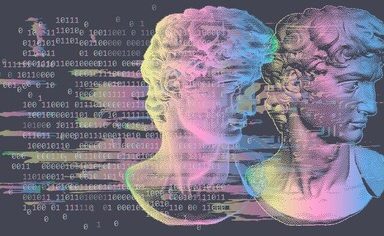“Ovaries” (2017) is a depiction of floating ripened fruit ovaries trapped inside an image. This animation was created by the digital artist Jennifer Steinkamp for the USC Department of Stem Cell Biology and Regenerative Medicine as part of their permanent collection.
Steinkamp, pioneer in the use of digital animation, seeks to transform the architecture of the places where she exhibits, with three-dimensional computer generated images which alter the public´s perceptions and produce spaces fraught with meaning.
#Cultural Data
Embryonic stem cells are derived from embryos at a developmental stage before the time that implantation would normally occur in the uterus. Fertilization normally occurs in the oviduct, and during the next few days, a series of cleavage divisions occur as the embryo travels down the oviduct and into the uterus. Each of the cells (blastomeres) of these cleavage-stage embryos are undifferentiated, i.e. they do not look or act like the specialized cells of the adult, and the blastomeres are not yet committed to becoming any particular type of differentiated cell. Indeed, each of these blastomeres has the potential to give rise to any cell of the body.
Human embryonic stem cells are derived from the inner cell mass of the blastocyst on day five of embryonic development. The stem cells are pluripotent, meaning they can differentiate into a wide range of cell types with many uses in regenerative medicine.
Source: US National Institute of Health


